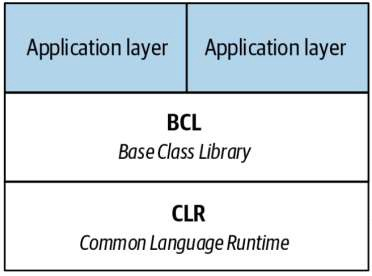
C# is an object-oriented, type-safe, general-purpose programming language that focuses on improving programmer productivity. It attempts to achieve this productivity through expressiveness, simplicity, and a focus on performance. It is available on different platforms such as Windows, Mac, and Linux.
C# is a statically typed language. This means that types are verified when the program is compiled. This can eliminate a large number of errors before the program is run.
Automatic memory management is a basic function of C#. It has a garbage collector that runs alongside the program to reclaim unused memory. This relieves the programmer from the burden of explicitly freeing memory.
The .NET ecosystem powers C# programs through the common language runtime and base class libraries. It also includes an application layer that provides libraries for building desktop, mobile or web applications.

Common means that the runtime is shared by other languages in the .NET ecosystem, such as C#, Visual Basic, F#, and Managed C. The CLR provides garbage collection and exception handling.
C# The compiler converts the code into an intermediate language (IL), similar to Java's bytecode. The CLR then converts this IL to the machine's native code, such as X-64 or X-86, before execution. This is called just-in-time (JIT) compilation.
The container of this intermediate language is called an assembly. It contains information about the type as well as IL code. It allows one assembly to reference another assembly. C# can also use reflection to query metadata.
The CLR contains a set of assemblies, called the base class library. It provides the basic functionality required by most programs such as I/O, file/text processing, networking, etc.
It also includes types required by the language itself, such as collections, LINQ, and asynchronous programming, and allows you to access CLR features such as garbage collection and reflection.
The above is the detailed content of A brief overview of the C# and .NET ecosystem. For more information, please follow other related articles on the PHP Chinese website!




